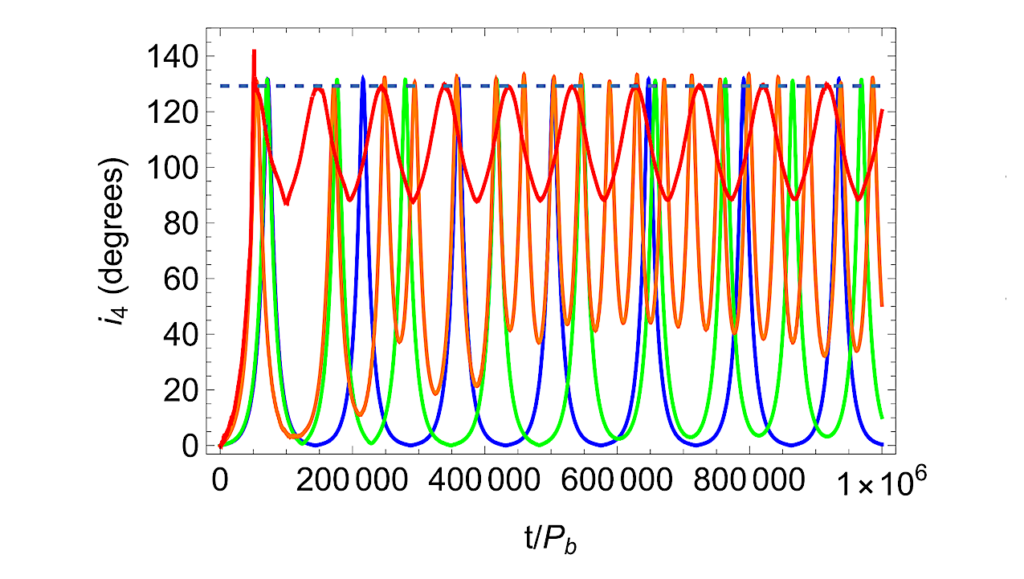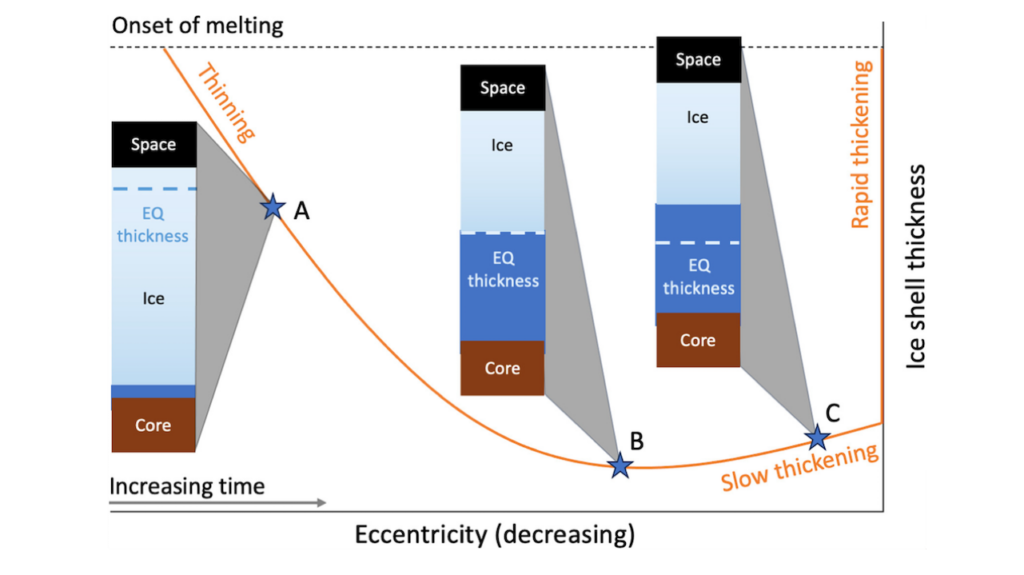Circulation Regimes of Synchronously Rotating Terrestrial Planets Near The Inner Edge of the Habitable Zone

We investigate the atmospheric dynamics of terrestrial planets in synchronous rotation near the inner edge of the habitable zone of low-mass stars using the Community Atmosphere Model (CAM).
We show that the surface temperature contrast between day and night hemispheres decreases with an increase in incident stellar flux. This trend is opposite that seen on gas giants, where the same forcing shows an increase in the day-night atmosphere temperature contrast. We define three dynamical regimes in terms of the equatorial Rossby deformation radius and the Rhines length. The slow rotation regime is characterized by a mean zonal circulation that spans from the day to night side.
Slow rotation requires that both the Rossby deformation radius and the Rhines length exceed planetary radius, which occurs for planets around stars with effective temperatures of 3300 K to 4500 K (rotation rate > 20 days). Rapid rotators show a mean zonal circulation that only partially spans a hemisphere, with banded cloud formation beneath the substellar point.
The rapid rotation regime is defined by the Rossby deformation radius being less than planetary radius, which occurs for planets orbiting stars with effective temperatures of less than 3000 K (rotation rate < 5 days). In between is the Rhines rotation regime, which retains a mean zonal circulation from day to night side but also features midlatitude turbulence-driven zonal jets. Rhines rotators are expected for planets around stars with effective temperatures in the range of 3000 K to 3300 K (rotation rate 5 to 20 days), where the Rhines length is less than planetary radius but the Rossby deformation radius is greater than planetary radius.
The dynamical state can be inferred from observations of orbital period and spectral type of the host star as well as from comparing the morphology of the thermal emission phase curves of synchronously rotating planets.
Demarcating circulation regimes of synchronously rotating terrestrial planets near the inner edge of the habitable zone
Jacob Haqq-Misra, Eric. T. Wolf, Manoj Joshi, Xi Zhang, Ravi Kumar Kopparapu
(Submitted on 1 Oct 2017)
Comments: 30 pages, 10 figures, submitted to ApJ
Subjects: Earth and Planetary Astrophysics (astro-ph.EP); Instrumentation and Methods for Astrophysics (astro-ph.IM); Atmospheric and Oceanic Physics (physics.ao-ph)
Cite as: arXiv:1710.00435 [astro-ph.EP] (or arXiv:1710.00435v1 [astro-ph.EP] for this version)
Submission history
From: Jacob Haqq-Misra
[v1] Sun, 1 Oct 2017 23:30:00 GMT (3541kb)
https://arxiv.org/abs/1710.00435
Astrobiology








